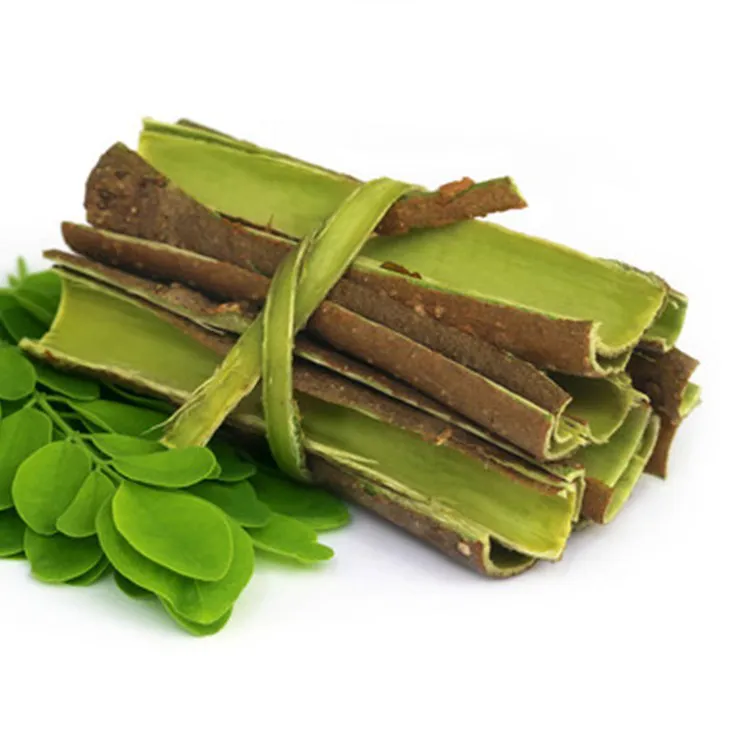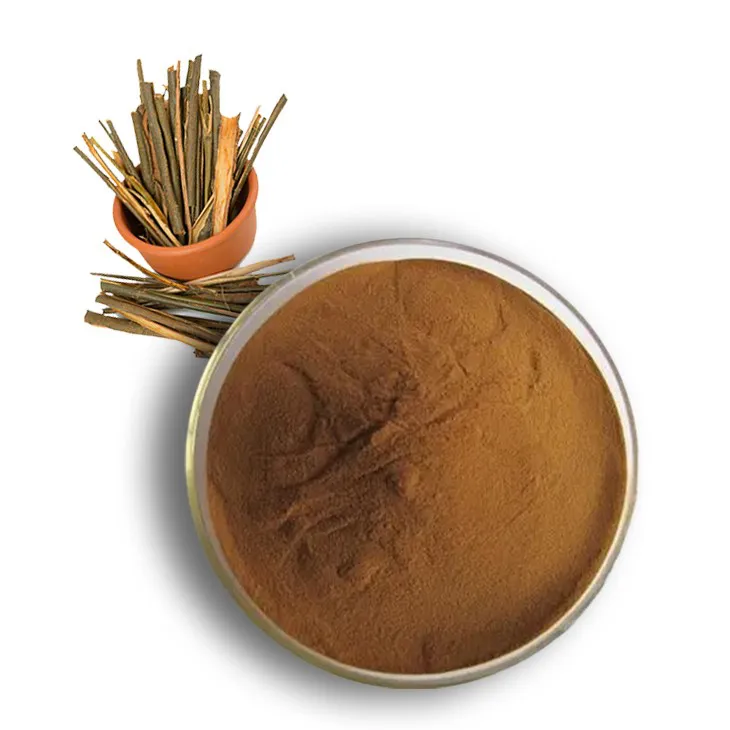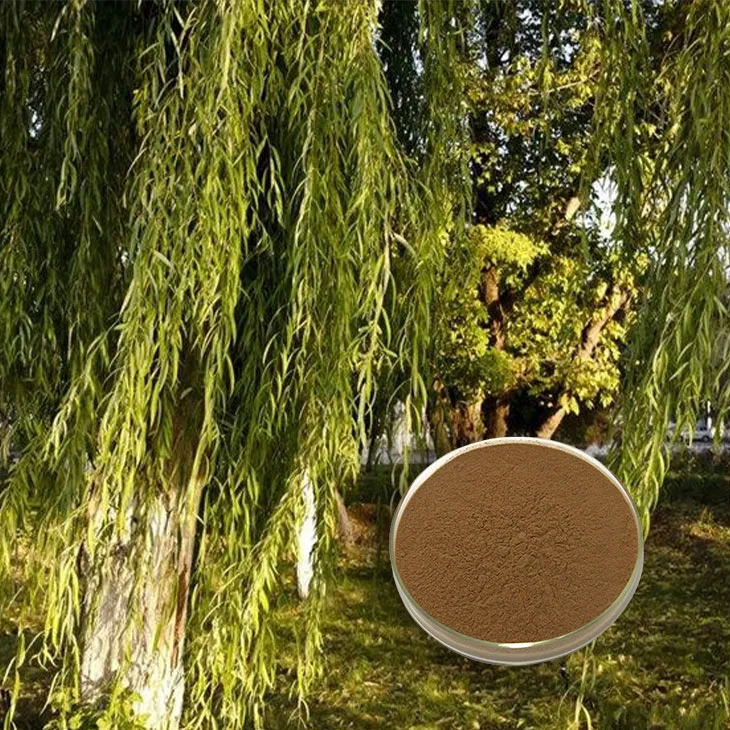- 0086-571-85302990
- sales@greenskybio.com
The process of extracting effective components from white willow bark from white willow bark extract.
2024-11-30

1. Introduction
White willow bark has been known for its potential medicinal properties for centuries. The extraction of active components from White Willow Bark Extract is a complex but highly significant process. These active components have a wide range of applications in medicine and health - related fields. Understanding and optimizing this extraction process can lead to the development of more effective natural remedies and pharmaceutical products.

2. The Importance of White Willow Bark
White willow bark contains various valuable substances. One of the most notable is salicin, which is the precursor to salicylic acid. Salicylic acid has analgesic (pain - relieving), anti - inflammatory, and antipyretic (fever - reducing) properties. In addition to salicin, white willow bark may also contain other phenolic compounds, flavonoids, and tannins that contribute to its overall medicinal effects.

3. Collection and Pretreatment of White Willow Bark
3.1 Collection
The collection of white willow bark should be done in a sustainable and ethical manner. It is important to ensure that the willow trees are not over - harvested. Typically, the bark is collected during the dormant season of the tree. This is when the bark is easier to remove and the tree is less likely to be damaged. The bark should be collected from healthy trees to ensure the quality of the extract.
3.2 Pretreatment
Once the bark is collected, it needs to be pretreated. The first step in pretreatment is to clean the bark thoroughly to remove any dirt, debris, or other contaminants. This can be done by washing the bark with clean water. After cleaning, the bark may need to be dried. Drying can be done naturally in a well - ventilated area or using artificial drying methods at a low temperature to preserve the active components. The dried bark can then be ground into a fine powder to increase the surface area for extraction.

4. Traditional Extraction Methods
4.1 Maceration
Maceration is one of the traditional extraction methods that can be used for white willow bark. In this method, the powdered white willow bark is placed in a suitable solvent, such as ethanol or water. The solvent should be able to dissolve the active components. The mixture is then left to stand for a period of time, usually several days to weeks. During this time, the solvent penetrates the bark particles and extracts the active components through diffusion. The longer the maceration time, the more complete the extraction may be. However, longer maceration times may also increase the risk of extracting unwanted substances or causing degradation of the active components.
4.2 Percolation
Percolation is another traditional extraction method. In percolation, the powdered white willow bark is packed into a percolator. A solvent is then slowly passed through the bark bed. This continuous flow of solvent helps in extracting the active components more efficiently compared to maceration. The solvent can be recycled and reused in the percolation process to increase the yield of the extract. However, percolation requires more complex equipment compared to maceration and proper control of the flow rate of the solvent is crucial to ensure effective extraction.

5. Concentration of the Extract
After the extraction using either maceration or percolation, the resulting extract is a dilute solution containing the active components as well as the solvent. Concentration of the extract is necessary to increase the concentration of the active components. This can be done by evaporation of the solvent. The evaporation can be carried out using methods such as rotary evaporation. In rotary evaporation, the extract is placed in a round - bottomed flask and rotated while being heated under reduced pressure. This helps in removing the solvent more efficiently and quickly without causing excessive degradation of the active components. However, care must be taken during the concentration process to ensure that the temperature and pressure are controlled properly to preserve the integrity of the active components.
6. Separation and Purification
The extract obtained after concentration still contains impurities. These impurities can affect the quality and effectiveness of the final product. Therefore, further separation and purification are necessary. High - performance liquid chromatography (HPLC) is a modern and highly effective technique for separation and purification. In HPLC, the extract is injected into a column filled with a stationary phase. A mobile phase is then passed through the column at a controlled flow rate. The different components in the extract interact differently with the stationary and mobile phases, causing them to be separated as they travel through the column. This allows for the isolation of highly pure active ingredients. Other techniques such as filtration, centrifugation, and crystallization can also be used in combination with HPLC to further purify the extract.
7. Quality Control and Characterization
7.1 Quality Control
Quality control is an essential part of the extraction process. Various parameters need to be monitored during the extraction, concentration, separation, and purification steps. These include the purity of the solvents used, the temperature and pressure during concentration, and the flow rate and column conditions in HPLC. Regular testing of the intermediate and final products should be carried out to ensure that they meet the required quality standards. For example, the content of the active components should be within a specified range, and the levels of impurities should be below the acceptable limits.
7.2 Characterization
Characterization of the extracted active components is also important. This involves the determination of their chemical structure, physical properties, and biological activities. Techniques such as spectroscopy (e.g., infrared spectroscopy, nuclear magnetic resonance spectroscopy) can be used to identify the chemical structure of the active components. Physical properties such as melting point, solubility, and stability can be determined through standard laboratory methods. Biological activities can be evaluated through in vitro and in vivo assays to determine their effectiveness in treating diseases or providing health benefits.
8. Applications of the Extracted Active Components
The active components extracted from white willow bark have a wide range of applications. In the field of medicine, they can be used as natural alternatives to synthetic drugs for pain relief, inflammation reduction, and fever treatment. They can also be incorporated into topical formulations for skin conditions such as acne and psoriasis. In the health - related field, they can be used in dietary supplements to promote overall health and well - being. Additionally, the extracted active components may have potential applications in the cosmetic industry for anti - aging and skin - enhancing products.
9. Conclusion
The process of extracting active components from White Willow Bark Extract is a multi - step and complex process. From the collection and pretreatment of the bark to the final separation and purification of the active components, each step requires careful attention and control. The use of modern techniques such as HPLC has significantly improved the quality and purity of the extracted active components. With further research and development, the potential applications of these active components in medicine, health, and other related fields are likely to expand, providing more natural and effective solutions for various health problems.
FAQ:
What are the important steps in the process of extracting active components from white willow bark?
The important steps include the collection and pretreatment of white willow bark, followed by extraction methods such as maceration and percolation. Then, concentration of the extract is carried out. Since the extract contains impurities, separation and purification are also necessary, with modern techniques like HPLC playing a key role.
Why are the collection and pretreatment of white willow bark important?
The collection and pretreatment are essential because they prepare the white willow bark for the extraction process. Proper collection ensures the availability of suitable raw material, and pretreatment helps in making the bark more amenable to extraction, which ultimately affects the quality and quantity of the active components obtained.
What traditional extraction methods can be used for white willow bark?
Maceration and percolation are traditional extraction methods that can be applied to white willow bark. Maceration involves soaking the bark in a solvent to extract the desired substances, while percolation is a process where the solvent is passed through the bark slowly to leach out the components.
Why is further separation and purification necessary after concentration?
After concentration, the extract still contains impurities. Further separation and purification are necessary to obtain highly pure active ingredients. These pure active ingredients are required for various uses in medicine and health - related fields, as impurities may interfere with the effectiveness or safety of the final product.
What role does high - performance liquid chromatography (HPLC) play in extracting active components from white willow bark?
HPLC plays a key role in achieving highly pure active ingredients from White Willow Bark Extract. It is a modern technique that can separate and purify the components effectively, allowing for the isolation of the desired active ingredients with high precision, which is crucial for their application in medicine and health - related fields.
Related literature
- Extraction and Analysis of Bioactive Compounds from White Willow Bark"
- "The Science behind Extracting Valuable Components from White Willow Bark"
- "White Willow Bark: Advanced Techniques for Active Component Extraction"
- ▶ Hesperidin
- ▶ Citrus Bioflavonoids
- ▶ Plant Extract
- ▶ lycopene
- ▶ Diosmin
- ▶ Grape seed extract
- ▶ Sea buckthorn Juice Powder
- ▶ Fruit Juice Powder
- ▶ Hops Extract
- ▶ Artichoke Extract
- ▶ Mushroom extract
- ▶ Astaxanthin
- ▶ Green Tea Extract
- ▶ Curcumin
- ▶ Horse Chestnut Extract
- ▶ Other Product
- ▶ Boswellia Serrata Extract
- ▶ Resveratrol
- ▶ Marigold Extract
- ▶ Grape Leaf Extract
- ▶ New Product
- ▶ Aminolevulinic acid
- ▶ Cranberry Extract
- ▶ Red Yeast Rice
- ▶ Red Wine Extract
-
Yellow Pine Extract
2024-11-30
-
Scutellaria Extract
2024-11-30
-
Aminolevulinic acid
2024-11-30
-
Yohimbine Bark Extract
2024-11-30
-
Aguaje Extract
2024-11-30
-
Moringa powder
2024-11-30
-
Grape Leaf Extract
2024-11-30
-
Horse Chestnut Extract
2024-11-30
-
American Ginseng Root Extract
2024-11-30
-
Clove Powder
2024-11-30





















